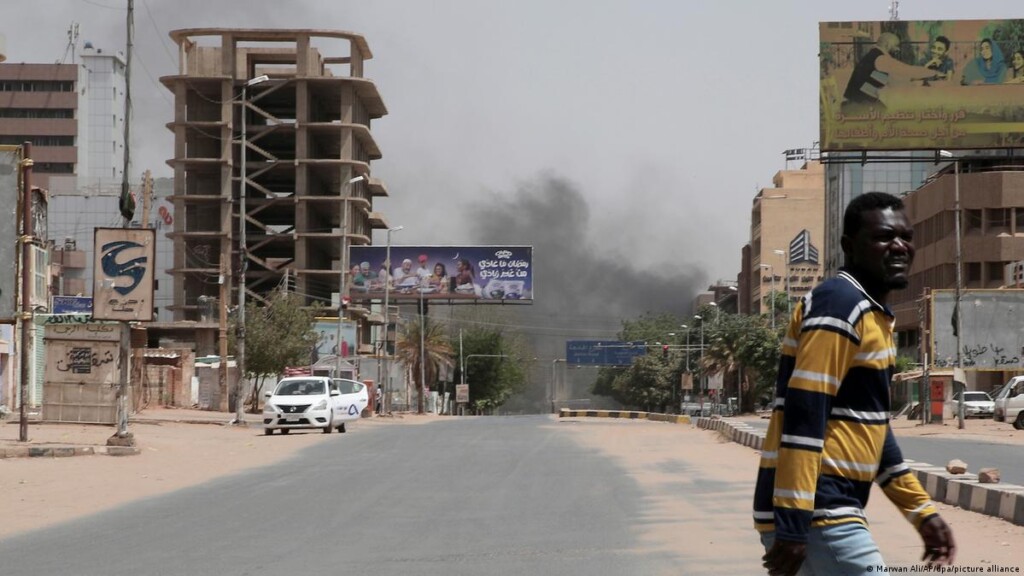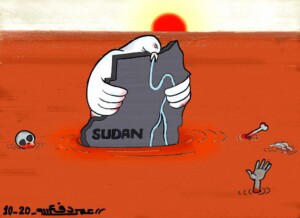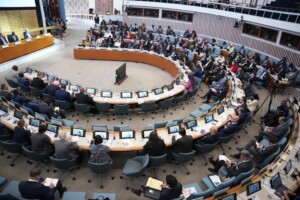USAID deploys ‘disaster team’ for Sudan as violence continues and health care collapses

Fighting continues in the Sudanese capital (Photo: supplied)
KHARTOUM / WASHINGTON DC –
Fighting between the Sudanese army and the Rapid Support Forces (RSF) continued over the weekend, while more than 420 deaths have been recorded since April 15. About 100,000 Sudanese fled their homes. The US Agency for International Development (USAID) has deployed a disaster response team to coordinate humanitarian response for the Sudanese.
Battles took place around the Republican Palace in central Khartoum, as well as in parts of Khartoum North (Bahri) and Omdurman. Warplanes were seen flying low over Khartoum Bahri, and the confrontations continued with civilians caught in the crossfire.
The death toll since April 15, when the fighting broke out, stands at more than 420 deaths, the Sudanese Ministry of Health, reported yesterday. The number of people injured rose to 3,700 injuries.
The Sudan Doctors Syndicate reported that on Saturday eight civilians were killed: four in Khartoum and four in Nyala, capital of South Darfur. 89 people were injured on the eighth day of the fighting.
The syndicate explained that many more deaths and injuries are not included in their report because of “the inability to reach hospitals due to the security situation in the country”.
In an interview with Radio Dabanga, Atia Abdallah of the Sudan Doctors Syndicate warned that the withdrawal of foreign missionsfrom Sudan “will make it increasingly difficult to access impartial information on casualties and human rights violations”.
Healthcare collapse
Doctor Abdallah echoed repeated calls that the health system in Sudan is on the verge of collapse. “Many hospitals in the country are working with limited capabilities, and the stock of medical supplies is running low, leaving patients with chronic diseases especially vulnerable”. He added that 11 doctors and medical students were killed during the conflict.
Abdallah also expressed fears of a humanitarian and environmental catastrophe, as a result of the number of corpses in morgues and on the streets. “Relatives of the victims have been unable to reach the morgues or locate the bodies of their loved ones”, he said, and demanded the bodies not be buried without an autopsy in the presence of official authorities.
He further questioned the rationale of the warring parties “siding with foreign missions and opening safe passages for them, when they are refusing to open passages for wounded people and medical personnel to reach hospitals”.
“The situation is catastrophic,” he said, and called on the international community to put pressure on both sides to stop the war “so that the wounded can be treated, and the corpses removed from the streets”.
The World Health Organization (WHO) said in a statement yesterday that a quarter of the dead in Sudan could have been saved if (para)medics had been able to reach the injured.
Displacement
A report from the International Organization for Migration (IOM) shows that about 100,000 Sudanese fled their homes since April 15.
The IOM Displacement Tracking Matrix indicated on Saturday that approximately 4,000 people left Khartoum and another 4,000 were displaced on Northern State. In El Obeid, capital of North Kordofan, about 8,000 people were displaced, while 17,000 fled their homes in El Fasher and Tawila in North Darfur. South Darfur saw the highest number of displaced people, with about 37,000 people fleeing from Nyala.
An additional 30,000 people sought refuge in Chad from neighbouring areas due to expected attacks. Movements to the borders with Egypt and South Sudan were highlighted as well.
Disaster response team
The US agency for International Development (USAID) has deployed a Disaster Assistance Response Team to coordinate humanitarian response for the Sudanese.
The team will be operating out of Kenya for the initial phase of the response, USAID head Samantha Power announced in a press statement yesterday. “Our disaster experts are working with the international community and our international partners to identify priority needs and to safely deliver life-saving humanitarian assistance to those who need it most.”
She called on the warring Sudanese army and Rapid Support Forces to abide by the three-day Eid El Fitr ceasefire “to which they have agreed, end this reckless bloodshed, facilitate humanitarian access, comply with international humanitarian law – including enabling safe and unhindered access for humanitarian and medical workers to reach people in need of life-saving assistance – and honour the Sudanese people’s calls for freedom and peace [..].
“And all of this suffering compounds an already dire situation – one-third of Sudan’s population, nearly 16 million people, already needed humanitarian assistance to meet basic human needs before this outbreak of violence.”











 and then
and then